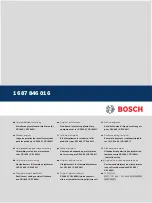
C
C
ROSSOVER
C
ABLE
T
ROUBLESHOOTING
T
IPS
When you work with 10BASE-T cabling, concentrators, and NICs
from different vendors, it is possible to connect everything but still
have no communication between file servers and workstations.
When there are several unknown variables, it is difficult to
determine which component is failing. Start with the following
procedure to narrow the range of possible causes:
1
Determine whether your equipment complies with the
10BASE-T standard.
This is particularly important for data concentrators (hubs
or repeaters).
2
Connect a straight-through cable from the PC to the hub.
The hub performs an internal crossover so that the signal can
go from TD+ to RD+ and TD– to RD–. When you look at an
RJ-45 connector from the front (that is, the opposite side from
where the wires enter the connector), pin 1 is identified on the
right-hand side when the metal contacts are facing up.
3
Make sure that the TD+ and TD– wires are twisted together,
and that the RD+ and RD– wires are twisted together.
Using wires from opposing pairs can cause signals to be lost.
Troubleshooting Hubs with Crossover Cable
A crossover cable can be used to isolate failures in these
components when hub performance or impedance settings are
in question.
1
Connect a file server and a client PC back to back with a
crossover cable to verify that the NIC and network
operating system are properly configured.
Summary of Contents for EtherLink III ISA 3C509B-COMBO
Page 12: ......
Page 22: ......
Page 54: ......
Page 64: ......
Page 84: ......
Page 100: ......
Page 105: ...NOTES ...
Page 106: ...NOTES ...
Page 107: ...NOTES ...
Page 108: ...NOTES ...
Page 109: ...NOTES ...
Page 110: ...NOTES ...
















































